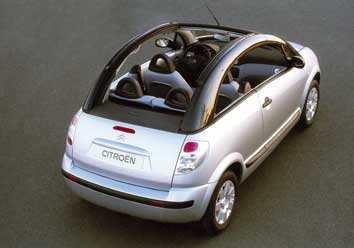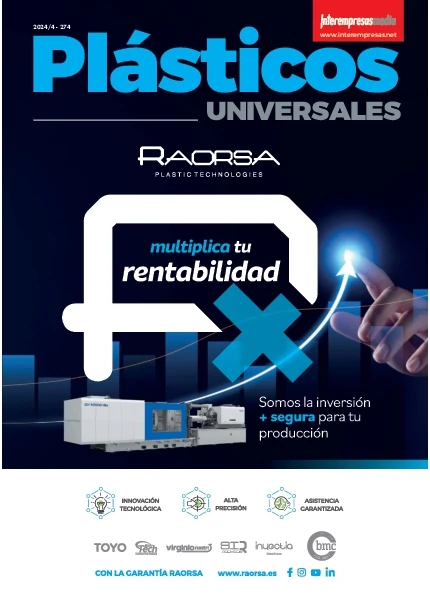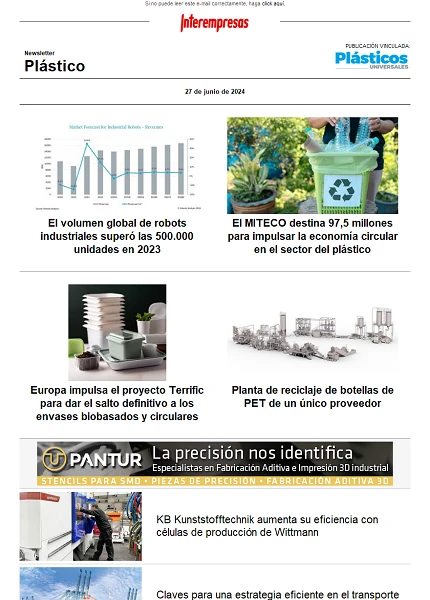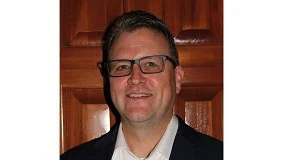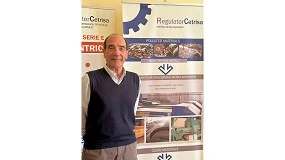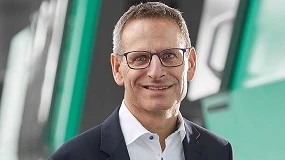This news article was originally written in Spanish. It has been automatically translated for your convenience. Reasonable efforts have been made to provide an accurate translation, however, no automated translation is perfect nor is it intended to replace a human translator. The original article in Spanish can be viewed at
El nuevo papel de los plásticos en la automociónInnovation versus evolution
The new role of plastics in the automotive industry
The reduction of the weight of the car was in the last one of the aspects which determine the increasing use of plastics in the automotive industry. However, its implementation in this area seems to have peaked, with what is left very little room for further expansion. This means that in this area the "evolution" has come to an end, because now plastics have other objectives that meet. Everything is now due to the "innovation", which is the maximum of the time: the modular design, the integration of production processes, modified materials and process technologies or the consideration of the radical demographic changes are just some of the most relevant key issues.
Plastics from Ticona have contributed to the versatility of the Citroen C3 Pluriel.
Application of plastics in cars has been stagnant at a relatively high level, since on average account for 14 percent of the total weight of a passenger of middle segment. In round numbers, that percentage is between 120 and 160 kilos depending on the model.
Application of plastics in the automotive industry so extremely high is the proof of the success of this material; for decades that success has been a reflection of how much that have contributed materials to the high-tech polymers that have reached the current cars. And, while the growth curve is less pronounced, it will be stabilized at a very high point or rebound in certain circumstances. One of these circumstances can be, for example, when the announced implementation of plastic components for large surface body parts is a fact. Alternatively, when the declared leap from the glass to the polycarbonate (PC) occurs in the manufacture of Windows and the rear window. However, this time, it comes up instantly stagnation and will be checked for other areas of the car in which the application of polymers can expand.
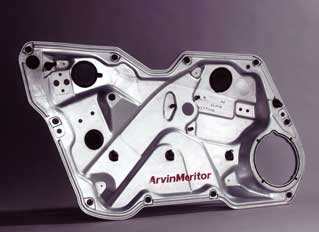
A prototype developed by Ticona in collaboration with Arvin Meritor and Philips demonstrates the advantages of the technique of injection "outsert" in door modules.
He begins to glimpse of the growth in applications of plastics in the automotive sector
According to Rudolf Stauber, director of the "Functional resistance and materials" technical area of the Centre for development of the BMW Group in Munich, today, in the development of passenger cars and commercial vehicles is given priority to the fulfilment of requirements in terms of the lightweight constructionpassive and active safety, attractiveness and comfort or environmental compatibility and economy. In his view, this applies to both the manufacture of the vehicle and its later use. According to the experience of Stauber, who is also Chairman of the Group of working Automotive of the VDI-Gesellschaft Kunststofftechnik, plastics contribute decisively to this large amount of requirements can be met even in a complex field.
A saturated market
Wolfgang Kircher has 30 years experience in the plastics processing sector and is currently working on the ground of plastics of Robert Bosch AG of Waiblingen. Also think that it is beginning to glimpse of the growth in applications of plastics in the automotive sector. According to Kircher, after years of dynamic development and increase in the proportion of materials polymers used in the car, you are entering a phase of consolidation or, at best, slow progression. This engineer still sees potential in structural elements, the moons and the body. However, in a large number of areas conquered over time plastics have been established of such dominant form that it has led to a high degree of saturation of the market.
Kircher did not believe that short-term go to produce a qualitative leap in the reduction of the weight of automobiles to both plastics as did the replacement of the traditional bumper, chrome-plated steel, by the plastic: "i.e., no change;" "you now have to innovate." Also is covered to a large extent the demand for fuel tanks made with thermoplastic blown of several layers. About 80 per cent of European cars already incorporating a plastic tank. But almost none of them has been made with plastic moons; for that you still have to wait.
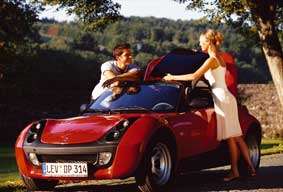
The module from the roof of the MCC Smart Roadster are composed of a film of PC is moulding with a rigid foam PUR reinforced with fiberglass of Bayer.
It is true that moons of solid plastic, are usually PC, on the verge of entering the market and be manufactured in series, but this is only true in the case of the rear lunettes and frameless side Windows. Hagen Noerenberg, President of the Council of management of Bayer MaterialScience AG (BMS), manufacturer of polycarbonate (PC) leader in Europe, is very optimistic. For him, within very little, the moons of the cars will be plastic, with the exception of the windshield. According to his calculations, in only three years they could be used up to 75,000 tons of PC production of moons. Noerenberg estimated the potential of replacing 30 million units a year. He also says that the manufacturers of "classical" moons will accept increasingly macromolecular material which makes the competition to the glass. Noerenberg understood as a proof of his thesis demonstrations of special processes for manufacturing with little stress of large moons of PC that will do the manufacturers of machinery during the 2004 K.
Within very little, the moons of the cars will be plastic, with the exception of the windshield
However, you should spend more time so that we can see polymeric windshields, but precisely with these elements vehicles pesarían few kilos less. But the windshield are exposed to extreme efforts. During the lifetime of a car, a windscreen must withstand the impact of stones, hail and abrasion of the windscreen wiper. There is little chance that a plastic with such virtues can be present in the near future. The Stuttgart DaimlerChrysler opted for the "Lamilight", a composite of glass and plastic reducing almost to half the weight of the front glass Moon laminar security, which today ranks among the most used.
Plastics are and will remain the motor of innovation in cars
What the future holds
In the Kunststofftechnik VDI-Gesellschaft in Düsseldorf, whose "Plastics in the automotive industry" seminar, already legendary, attracting every year 1000 participants to the Rosengarten Mannheim Congress Centre, they are convinced that "plastics are and will remain the motor of innovation in cars". Only one wonders where new trends are directed and where point innovations, or what aspects will be keys to the car in the future industry. Once saving weight ceases to be in the spotlight of the activities, what are the objectives? What order of priority be saved other aspects, such as the increased safety and comfort, or networked production processes and more economic in the future agenda of plastics applications in the automotive industry?
Luckily, the large manufacturers of raw materials such as DuPont, Basf or Bayer have "search trends" very knowledgeable responsible for scrutinizing the forecasts of the future to at least get an idea of what aspect will have cars of tomorrow.
Eckard Foltin, director of the Creative Center of Bayer Polymers, for example, is of the view that the ageing of the population of industrialized Western countries will mark a decisive production cars of the future. This means that issues such as sustainability and ergonomics, as well as a greater need for safety and comfort, will continue to be of great importance in the future or will have even more weight.
Behavior of consumption and investment in consumer goods of long life, such as a car, will become more and more in a demographic phenomenon. In any case, the ageing of the population of Western Europe may it mean a decrease in the portfolio of clients, but does not mean "that the elderly lead boring cars". Ferdinand Dudenhöffer, Manager of the German consultancy B & D Forecast GmbH is thus expressed. The only thing that change are the priorities. Older people who drive wish to see offset the limitations associated with age, as the decrease in vision or hearing, a slower reflexes, etc., with innovations such as distance or parking sensors, or other sophistication that has resulted from the advance of electronics and the field of polymers.
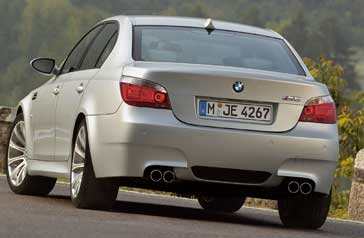
Sustainability and ergonomics, as well as greater safety and comfort, have increasingly more weight
If so far this world automotive design and manufacturing centers have focused all its efforts on improving the safety of the occupants of the vehicle, would not be bad, for a change, was started to improve the safety of pedestrians.
The automotive industry is already committed to making changes in this regard. A commitment at the moment is only a promise. You are trying to change the design of the fenders and hood of the next generations of vehicles so that they can absorb the maximum energy of the impact on accidents with pedestrians. And here are emerging opportunities for plastics, the fenders of thermoplastic materials are much more flexible than the of galvanized sheet, by very fine to be.
Modular car
Raw materials manufacturers have also good prospects for their polymer products in another area: Plastics have much to do with the fact that modern cars are increasingly modular. The basic principle of this modularity is comparable to a Meccano set. With a defined number of elements, the car manufacturer can cover a wide variety of vehicles and a great complexity without great cost. You can personalize them and better meet the requirements of its customers. Suppliers develop the different modules, such as the front, the position of command, the door, the roof or the back according to the instructions of the final manufacturer, OEM, and these elements will go directly to the Assembly for their subsequent Assembly line. The OEM is perfect. You can save time and costly investments in development and ordered the manufacture of the modules in question to real specialists.
Some of the automotive industry experts believe that cars will only consist of four to five modules in the future. It will be of very complex to serve the various components in a minimal space. However, the automotive industry tends increasingly to be confined in the amount of materials to be used mainly for reasons of cost and environmental. Although previously used various materials for the same modular system, is now often used a single plastic such as polypropylene (PP). It concentrates the Opel House. This gives advantages not only in the Assembly. It also facilitates the subsequent recycling.
The German company Ticona GmbH, along with ArvinMeritor systems manufacturer and producer of modular elements Philips, have developed the prototype of a module of door that is manufactured using the technique of injection "outsert". This is sobreinyectar in a single operation of the machine for moulding various functional elements in a metal plate. This structural element acts as a carrier of components such as the Windows, lock, or the speaker integrated into the lining of the door. The development team selected a specific type of "hostaform", a resin (POM) thermoplastic of Ticona that presents, according to the manufacturer, the necessary fluency, a good relationship resistencia-tenacidad and a good milks.
Some experts believe that cars will only consist of four to five modules in the future
ArvinMeritor manufactures in Gifhorn, a town in Lower Saxony, the ceiling for the small sport "smart roadster" module. It is the result of close collaboration between Bayer and MCC, a subsidiary of DaimlerChrysler with headquarters in the French town of Hambach. This component of glossy finish consists of a thermoplastic sheet that is applied in the rear face special PUR reinforced with fiberglass, rigid foam which forms part of the range "Baydur STR" from Bayer Material Science AG. A sheet of polycarbonate coextrusionada with the striped-resistant coating, together with an adherent layer formed also by polycarbonate and the copolymer ASA (acrylonitrile-styrene-acrylic ester), presents an excellent brightness.
